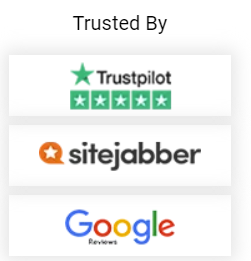Description
5OS02 Advances in digital learning and development Assignment Answers
Our 5OS02 Advances in Digital Learning and Development assignment answers save you from tedious and time-consuming study sessions. The 5OS02 Advances in Digital Learning and Development assignment answers will give you the confidence to tackle your tasks helping you master the unit content with ease and free from the frustration of irresponsive tutors and tedious book reads and unfruitful web searches. To guarantee a complete understanding of the subject, our 5OS02 examples divide complex concepts into manageable parts. With the included references, you can look at other sources to improve your work and knowledge thus allowing you to focus on refining and personalizing your responses. These 5OS02 examples answers will show you how to properly structure your answers, use academic terminology, and provide thorough explanations. The 5OS02 Advances in Digital Learning and Development assignment answers will help you fully comprehend what the assessors want and how well you can communicate your ideas in your assignment.
5OS02 Task: Questions
5OS02 Assignment Answers, knowledge and understanding will be assessed through written responses to the following questions:.
(AC 1.1) Evaluate how the development of technology, along with digital collaboration, has impacted the design and delivery of learning and development over the past five years.
Organisations are now embracing e-learning which is suitable for the new ways of work including remote and hybrid-working (Mukherjee & Nath, 2016). With E-leaning employees can access learning and training through e-resources. They can access webinars and resources online. For instance as a fully online CIPD learner I am able to access learning materials online, attend lecturers, complete my assessments and receive my results remotely through e-learning. Virtual reality has also taken over learning and development as employees are able to recreate real life settings and simulate work challenges (Mukherjee & Nath, 2016). In order to compute, aggregate, and discover the knowledge gaps in an individual’s knowledge, L&D is currently embracing AI (Mukherjee & Nath, 2016). This knowledge is then employed to develop a learner’s profile and enhance overall learning experience.
Learning management systems (LMS) and learning experience platforms have improved learning and development efficiency (LXP).
An LMS is a piece of software that houses, distributes, and tracks training materials (Oliveira, et al., 2016). It offers the framework for managing every part of the learning process. LMS is advantageous to the organization because it provides consistent and centralized training while minimizing facility and teacher costs, optimizing training expenditure and usage, and reducing employee travel (Oliveira, et al., 2016). The organization will need coding and IT expertise to tailor the platform to your training needs, which is a drawback.
(LXP) is a software as a service platform for peer learning experiences that is AI-driven (SaaS). LXPs were created as a result of a novel approach to corporate learning platforms that addressed alleged LMS weaknesses (Valdiviezo, & Crawford, 2020). An LXP reverses the approach to focus on employee needs, whereas an LMS focuses on the needs of the L&D department to give education, policy, and compliance training to employees (Valdiviezo, & Crawford, 2020). Setting up and using LXP apps can be challenging, and there are frequently compatibility problems when you need to link the LXP to other hardware or software.
Organisations are now embracing e-learning which is suitable for the new ways of work including remote and hybrid-working (Mukherjee & Nath, 2016). With E-leaning employees can access learning and training through e-resources. They can access webinars and resources online. For instance as a fully online CIPD learner I am able to access learning materials online, attend lecturers, complete my assessments and receive my results remotely through e-learning. Virtual reality has also taken over learning and development as employees are able to recreate real life settings and simulate work challenges (Mukherjee & Nath, 2016). In order to compute, aggregate, and discover the knowledge gaps in an individual’s knowledge, L&D is currently embracing AI (Mukherjee & Nath, 2016). This knowledge is then employed to develop a learner’s profile and enhance overall learning experience.
GET FULL 5OS02 NEW BRIEF Assignment Answers (2024-2025): »
(AC 1.2) Evaluate at least one risk and one challenge that technology-based learning and development poses to:
-
Organizations and how these could be addressed (part of AC 1.2)
-
L&D professionals and how these could be addressed (part of AC 1.2)
-
Learners and how these could be addressed (part of AC 1.2)
(AC 2.1) Assess the following five different types of digital learning content: ‘explainer videos’, PDFs, infographics, e-learning and scenarios. Discuss when these types may be applied in learning and add in an overview of the benefit the learner receives from this type of digital learning content.
(AC 2.2) Evaluate three attributes that you would consider to help you choose the right digital learning content to maximise the impact on learner engagement and how you would ensure that the content meets the identified learning need.
5OS02Task 2: “Showcasing” digitally facilitated learning using a live online learning system
(AC 3.1) Their key ‘facilitation functions’, or functionalities, and their strengths and weaknesses as live online learning delivery methods.
(AC 3.2) Discuss how the facilitation of a live online learning activity can differ from the facilitation of a face-to-face learning activity and the implications of this for:
-
Facilitators
-
Learners
-
Learning administration
(AC3.3) Assess three main facilitation skills required to facilitate live online learning, then pick one that you wish to develop further and provide yourself with a SMART Development Objective to add to your PDP in support of that knowledge/skill development.










Reviews
There are no reviews yet.